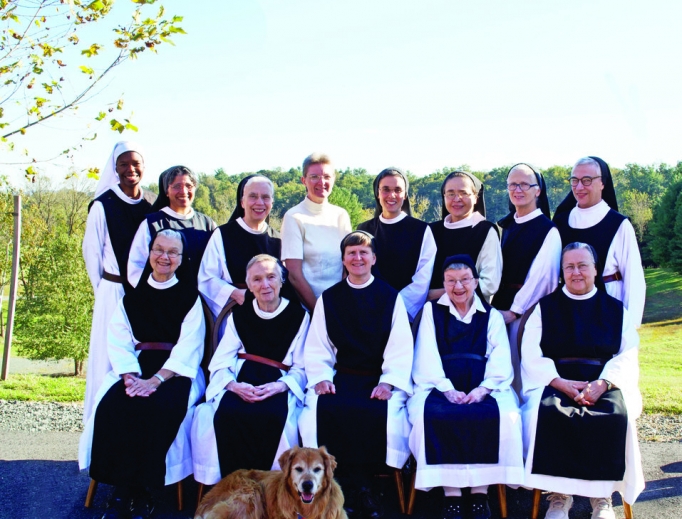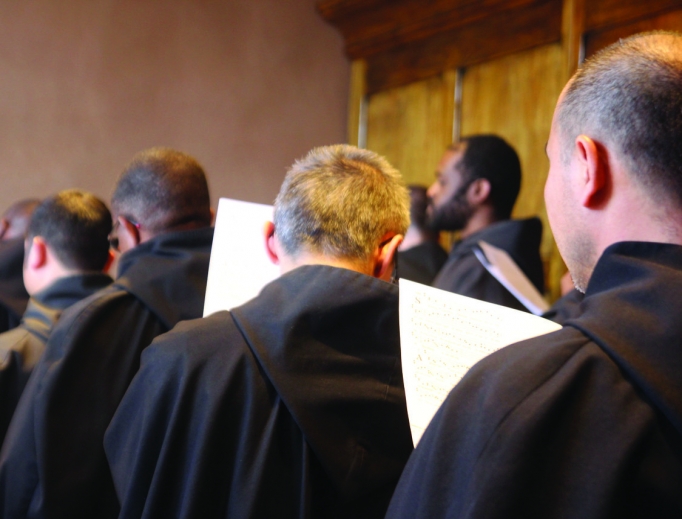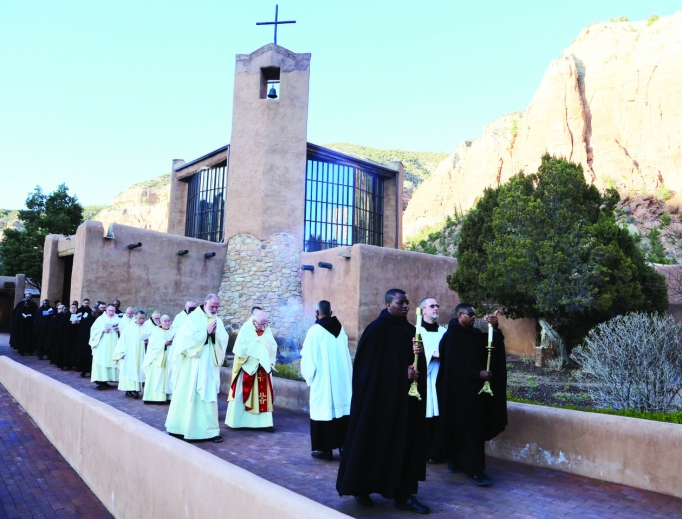Bringing the Faith to the Ends of America: Monasteries Take Root in Remote US Locations
Three such communities have chosen to live in isolated areas where they may better live a life of prayer and contemplation, while sustaining their needs with manual labor.

Some religious communities, such as the Franciscan Friars of the Renewal in New York City, work in the heart of the city.
Others have planted their communities far from population centers in remote regions of the country. Three such communities have chosen to live in isolated areas where they may better live a life of prayer and contemplation, while sustaining their needs with manual labor.
Our Lady of the Angels (OLAMonastery.org) is a Trappist-Cistercian Monastery in Crozet, a small Virginia community in the foothills of the Blue Ridge Mountains. The community was founded by six sisters in 1987 and today is home to 13 sisters, ages 40 to 87. The sisters live a regimented life of prayer, rising at 3am for individual prayer and spiritual reading and retiring after Compline at 7:30pm. The sisters support their community through manual labor and are well-known for their Gouda cheese, called Monastery Country Cheese, which they have manufactured and sold since 1990.

The monastery is located on a 500-acre site, 390 acres of which are woodlands, about a mile from a main road. The area is remote, far from any housing developments or other residential or urban areas.
Sister Barbara Smickel first became a Cistercian sister in 1956 and was one of six founding sisters of the Crozet community. She said the monastery’s location was chosen with care.
As she explained, “We appreciate silence and solitude. Our location gives us the privacy we need for prayer. The forest and mountains are also beautiful, and beauty is very uplifting for prayer.”
However, despite the far-away location, she said, “People still make their way up here to go on retreat, buy our cheese or pray in our church, which is always open to the public.”
The sisters’ church was completed just two and a half years ago, funded by proceeds from cheese sales and donations.
When not at work, the sisters wear a traditional white robe covered by a black scapular, along with a black veil (or white, for those who haven’t professed their final vows). Their formation period is nine years.
Sister Barbara feels blessed by her vocational discernment: “I love it. Living in this community has been the greatest gift of my life.”
Another religious community remote from the world but close to the faith, the monks of Our Lady of Clear Creek Abbey in Hulbert, Oklahoma (ClearCreekMonks.org), are celebrating the 20th anniversary of their abbey’s founding. The Benedictine community is located in a wooded site about 50 miles southeast of Tulsa. Its 50 monks live a regimented life in accordance with the Benedictine motto ora et labora, “pray and work.”
The community got its start from the Great Books program at the University of Kansas, which studies the roots of Western civilization through the classic works of literature. Students in the program interested in the monastic life made their way to Notre-Dame de Fontgombault Abbey in France, with the intention of returning to the U.S. to establish a new monastic foundation.
After looking throughout the U.S. for a monastery site, they selected a ranch along Oklahoma’s Clear Creek. Its first buildings included a log cabin, barn and stable; the barn was the community’s first chapel, and horse stalls were the first monastic cells.
Benedictine Father Norton, a priest with the community, recalled his first visit to the site 13 years ago: “It was very primitive.”
The community prays in Latin and celebrates Mass according to the extraordinary form, and Father Norton was first attracted to their celebration of the liturgy.
“Their whole day was centered around saying Mass,” he said. “It was devout and reverent.”
About a third of the monastery has been built since those early days. The monks’ goal is to build a magnificent abbey, said Abbot Philip Anderson, “to last a thousand years.”
Because the monastery is located in a remote rural area, its monks work the land and may be found chopping down trees for use on the property and planting new ones to take their place. The monks also milk cows, raise pigs and sheep, perform carpentry work, cook their own food, and make items to sell to visitors.
Father Norton said that it was difficult for him “to live a Christian life in the modern world.” Now, happy in his vocation, he lives “a more simple life centered on Christ.”
The Southwestern region of the U.S. has also made a welcoming site for monastic life. The Monastery of Christ in the Desert of Abiquiu, New Mexico (ChristDesert.org), is a 55-year-old community located in an especially remote location, the wilderness of Chama Canyon. It is a beautiful setting in a valley, surrounded by mountains and trees. To reach the site, visitors must travel 13 miles down a dirt road off U.S. Route 84 and along the Chama River (when it rains, the road may become impassible for a time), which the prior, Brother Benedict, calls “our driveway.” The nearest small town is a 45-minute drive away.


The monastery’s 60 Benedictine monks also engage in manual labor to provide for their needs. They operate a retreat house for visitors and offer religious items for sale. They wear a traditional Benedictine habit, as well as a habit designed for work.
The modest buildings of the monastery blend into the landscape, and much of the monastery’s power comes from a solar array. The monks keep a rigorous prayer schedule, from 4am to 8pm, and rarely leave the monastery. Prayers are sung; and the monks perform regular penances, including abstinence from meat.
When not in prayer, monks might be found repairing machinery, caring for visitors on retreat, baking bread or cleaning or making religious items to sell. Yet despite its wilderness location, the abbey draws 30,000 visitors a year.
Abbot Emeritus Philip Lawrence, leader of the community from 1976 to 2018, noted that visitors are impressed by the “daily discipline of the monks.” Visitors ask, he said, “Why would anyone want to get up early and pray? Can’t we pray just as well and get up later? So the discipline of our lives touches the guests and visitors.”
Jim Graves writes from Newport Beach, California.
- Keywords:
- catholic america
- jim graves
- religious life
















